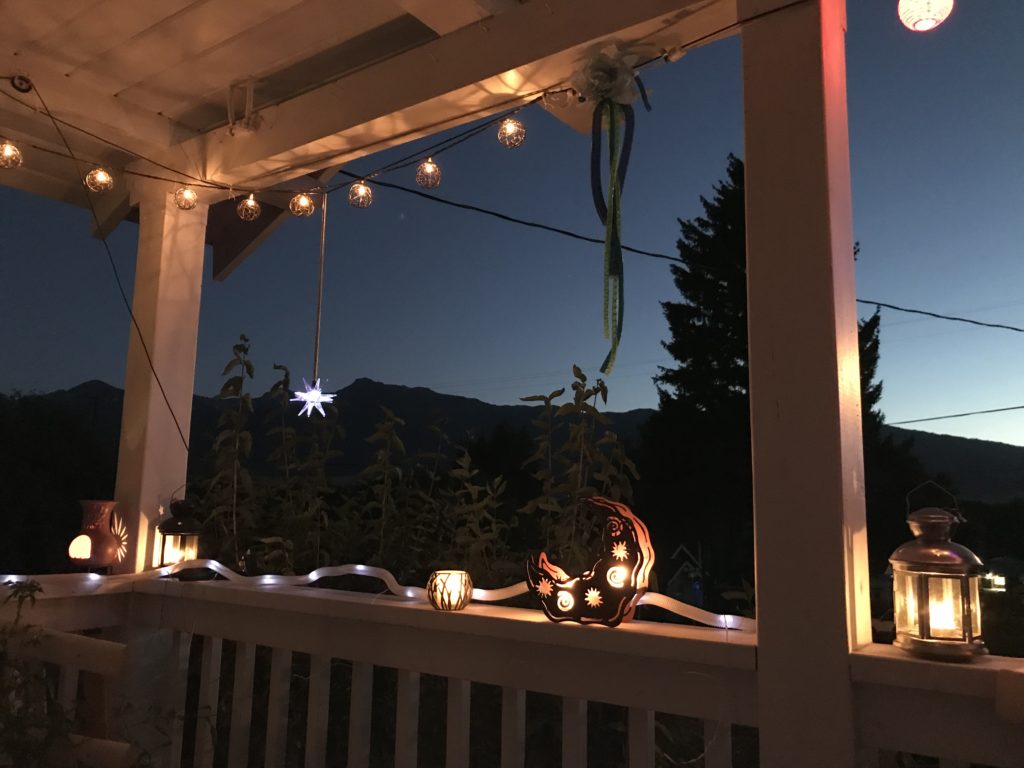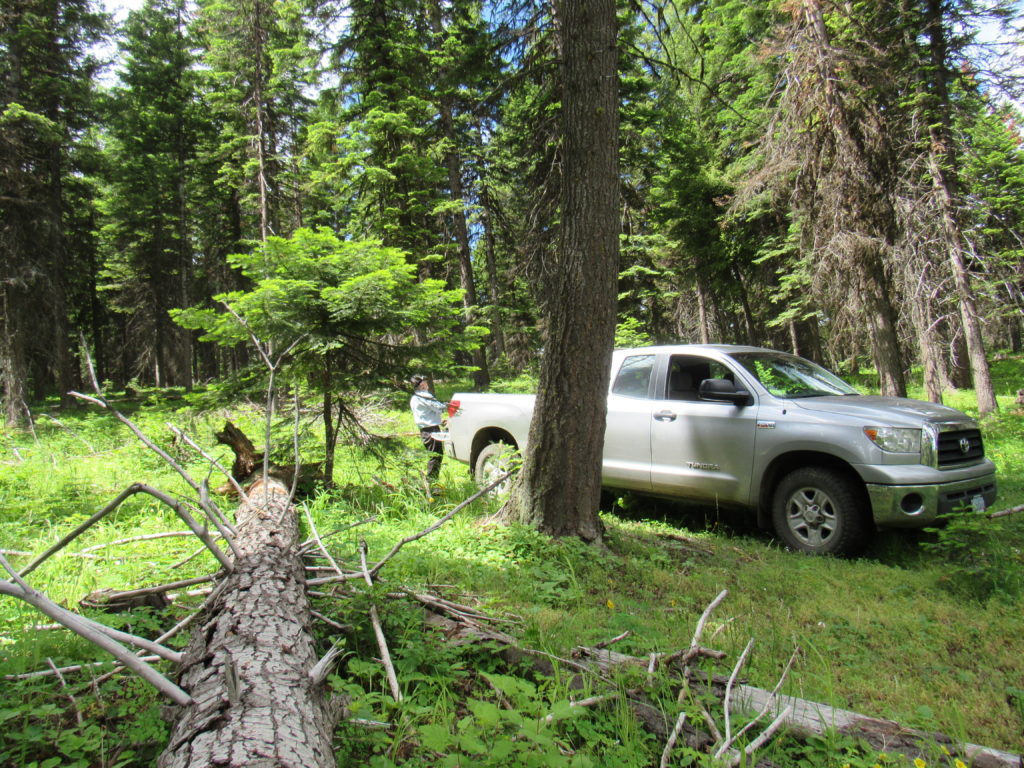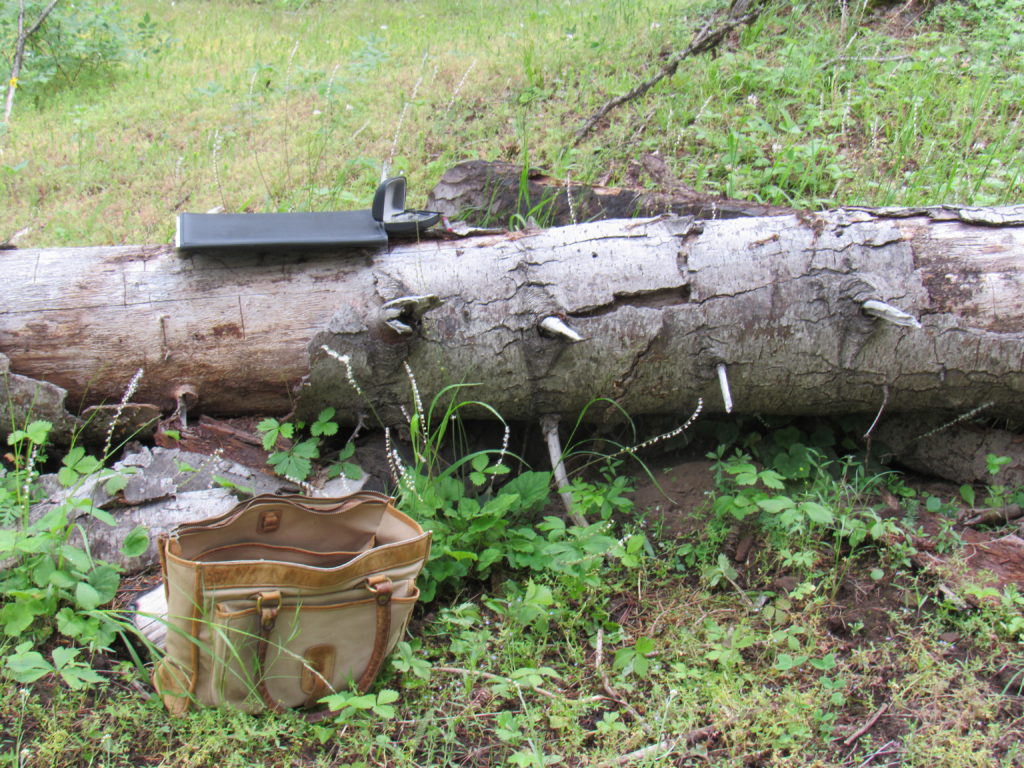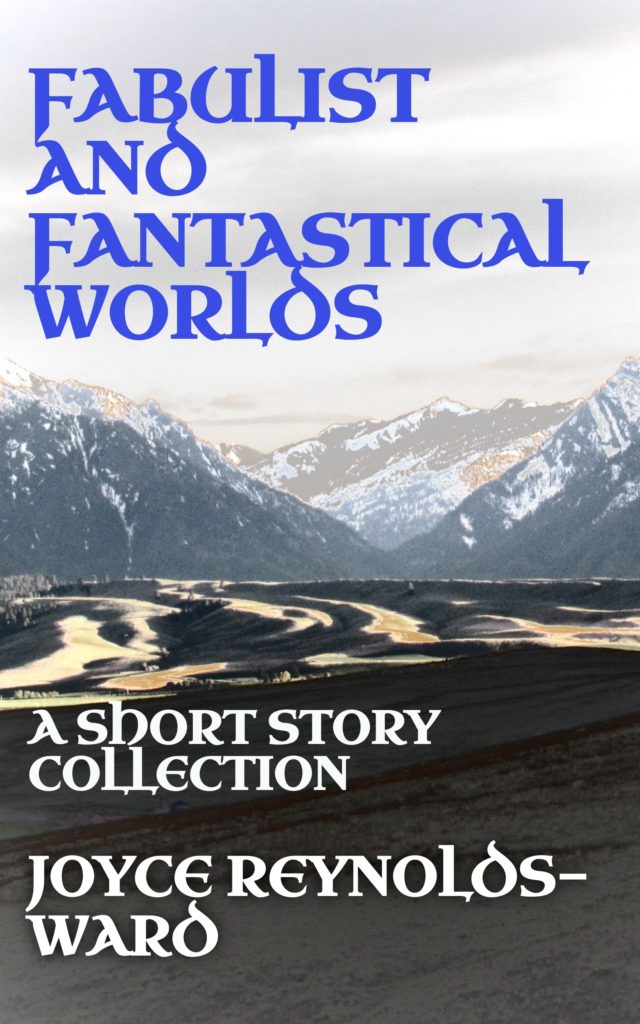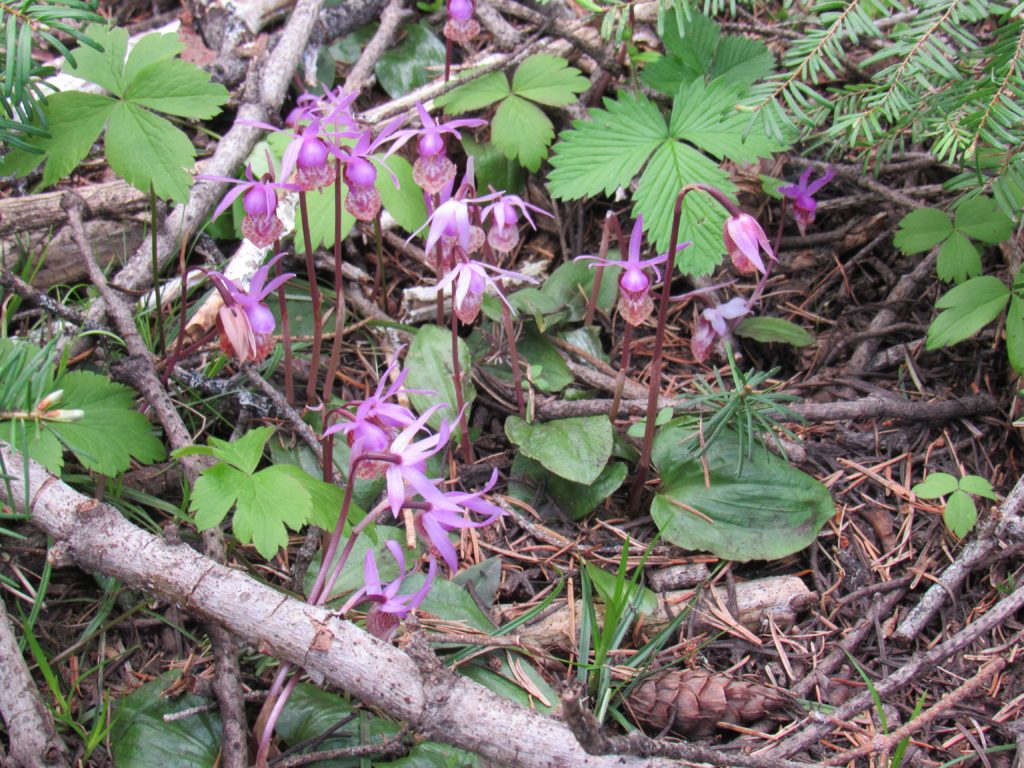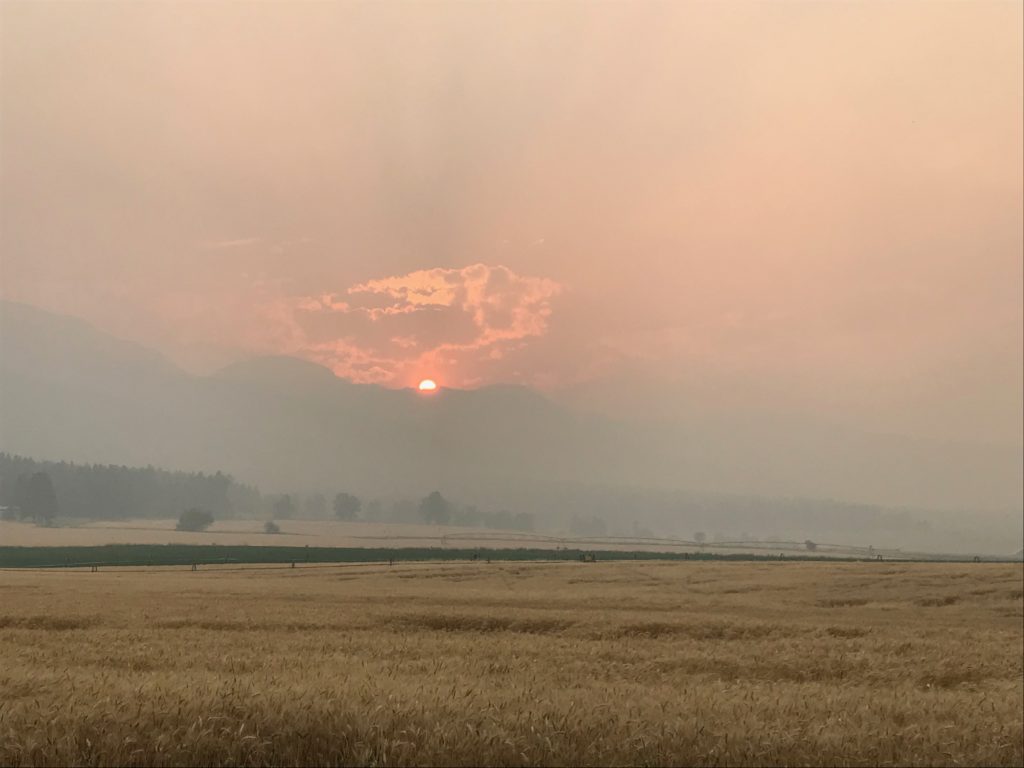
Picture: September 7, 2022, Wallowa County.
I became smoke and fire-aware at a very young age, living in Western Oregon. Besides the one view of a wildfire raging around a point above Lookout Point Reservoir while the family was on their way to our usual summer camping and fishing location in the Cascades, there was always an awareness in August that things were dry, unsupervised flame was bad, and that lightning could bring wildfire. There were little spur roads all around the campground we favored by Crane Prairie Reservoir that had little metal signs on white-painted wood that read “Fire Road” plus a number.
But my smoke awareness wasn’t just due to wildfires. Growing up in the southern Willamette Valley in the late ‘60s and early ‘70s meant being around a lot of grass seed cultivation. The preferred method for sterilizing the fields from pests and disease was open burning. Things got really bad at times. The worst was the infamous “Black Tuesday” of August 12, 1969. Of course, we don’t have AQI data from that era, but I remember the skies being dark with smoke (I was almost twelve years old at the time). A smoke management program which, basically, sent the smoke directly east into the small valley where I grew up, was enacted. It wasn’t until much later and a disastrous 23-vehicle pileup on Interstate 5 near Corvallis which killed seven people on August 3, 1988, that serious management came under consideration. Even then, it wasn’t until around 2009 that serious acre reduction was enacted. By that point I lived at the other end of the Willamette Valley, because between pollen and smoke, the Eugene area was just not feasible.
Years of exposure. Years where part of my summer centered around avoiding smoke as best as I could, thanks to reactive airway disorder and asthma, caused in part by those exposures as well as growing up in a household with multiple cigarette smokers.
Meanwhile, wildfire smoke became worse and worse. A summer visit to Northeastern Oregon where clouds of smoke covered everything in 1986. The 1988 Yellowstone fires that turned the sun orange during our Labor Day camp. Flying to Denver on a red-eye and looking down to see all those fires burning.
Reading Norman Maclean’s Young Men and Fire. Writing a moody review for an environmental literary journal that hit the streets just as the Storm King fire killed firefighters in almost the exact same scenario that Maclean wrote about.
But it has only been in the last ten years that I learned to dread smoke and fire even more.
#
2015 Fire smoke started in July, with a major fire along one of the corridors into the Wallowa Valley, followed by an August of smoke and fire. Looking at the bright orange sunset as the horse went into the vet clinic to treat colic. Seeing a horned owl hanging out on the lamppost across the street from the house on the smokiest of days. Attending the World Science Fiction Convention in Spokane, just as multiple fires broke out around the region. Needing to leave the convention early because of the possibility that I might need to evacuate my horse, and having to take a 200 mile detour because another fire cut off the shortest route.
2017 Beside smoke, a teenager playing with fireworks sets the Columbia River Gorge on fire, closing down the major east-west corridor of I-84 through the region. The flames come close enough that portions of the Portland east metropolitan area comes under evacuation orders.
2020 Smoke from Idaho fires, California fires, Southern Oregon fires, topped by smoke from the catastrophic wildfires on the west slope of the Cascades from Eugene to Portland. We end up buying air purifiers because the AQI ranged from 250-400 for several weeks.
2022 Late August/early September thunderstorms triggered three big fires surrounding our high mountain valley. While our town was never at risk, hard winds blew ash and cinders into town, some with chunks as big as two inches long. Again, weeks of mostly wildfire smoke with AQIs in the 100-250 range, occasionally with a day or two under 100 AQI. While I used to like thunderstorms and watching them, the sound of thunder now fills me with dread because where’s the next fire start going to be?
2023 Wildfire smoke drifting into the valley in April from Canadian wildfires. Out in the woods cutting firewood for the winter. Almost no mushrooms, including morels. Despite a heavy snow winter, the ground is scary dry. What will this summer bring? Is this the year that the north face of the Wallowas ends up burning?
I hope not, but one never knows.
Shocked reactions when the Canadian wildfire smoke drifts into the mid-Atlantic region and the Midwest. Jaded responses along with survival advice from those of us in the West who have lived with this reality for years.
And now what?
#
Forest management is one huge factor in how we got to this position in the first place, and that story is one that is far too long for someone like me to go into all of the twists and turns. Catastrophic wildfire is, unfortunately, not unusual in timber country. Big burns happened in Minnesota as an adjunct to logging. One of the biggest ones happened in the late nineteenth century and killed hundreds of people. https://en.wikipedia.org/wiki/Great_Hinckley_Fire
In my own corner of the woods, the multiple Tillamook Burns are an epic part of the state’s history, now second to the 2020 Cascade fires that happened under very similar conditions. https://en.wikipedia.org/wiki/Tillamook_Burn
But the biggest, and most devastating due to long-term impact on forest policy was the Big Burn of 1910 in Idaho/Montana. Those fires led to a policy of fire suppression that has placed us in today’s untenable position, where decades of “no fire is good” has led to a buildup of dangerous underbrush and fuel in the forests, without understanding the role that fire has in the management of a healthy forest ecology. https://foresthistory.org/research-explore/us-forest-service-history/policy-and-law/fire-u-s-forest-service/famous-fires/the-1910-fires/
#
Is there a solution? Well, it took us a century to get to this position with the ineffective tool of fire suppression. There’s also a colonialist/settler attitude that disregards the reality that indigenous peoples effectively managed forestlands in the Americas for centuries before the Europeans showed up. Fire was a management tool in indigenous hands, a means for controlling underbrush and dry grasses while promoting the growth of more fire-resistant plants.
But the sort of fire we’re talking about here isn’t the big, huge wildfires. Rather, the use of creeping fire, or quick burns such as used in grasslands.
Other solutions?
Precommercial thinning and thinning of thickets of short-lived succession species before they reach the end of their lifetime.
Shutting down powerlines during high-risk situations.
Educating forest users about safe fire behavior, including not shooting off firecrackers, not driving off-road even to turn around in tall, dry grass (catalytic converters and the hot underside of a vehicle can start a fire), and being aware of any activity that could ignite a fire during hot, dry periods.
Managing brush around houses.
Will that be enough?
Who knows?
Meanwhile, I’m preparing for a typical West Coast summer. I have plenty of masks for smoky days. The air purifiers for the house. Soon, I’ll start checking WildCad and the local Forest Service fire information site for news of potential fire starts. I’ll be making evacuation plans for us and for the horse.
Welcome to the reality of the 21st century, and life in the shadow of smoke.




